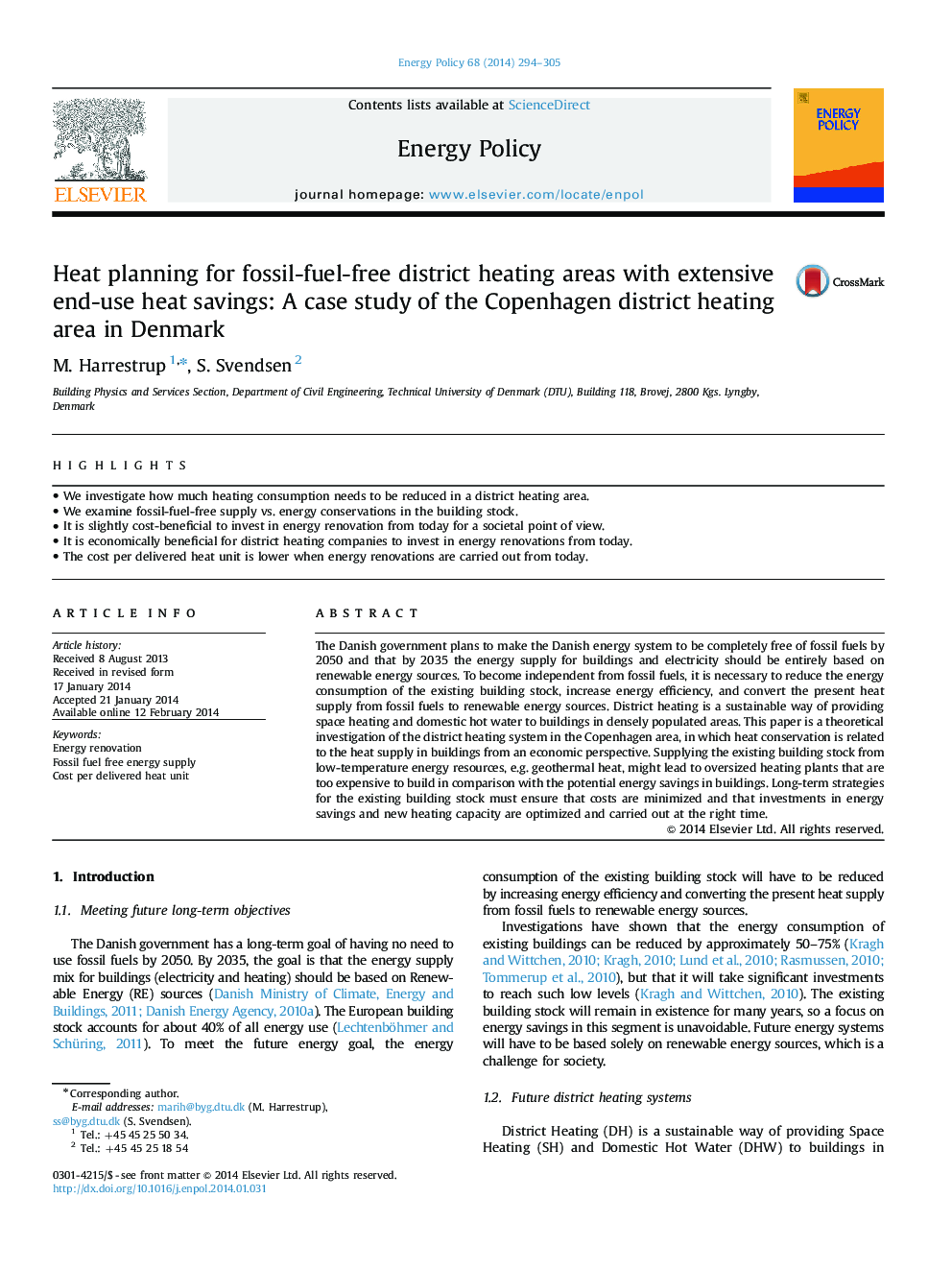| کد مقاله | کد نشریه | سال انتشار | مقاله انگلیسی | نسخه تمام متن |
|---|---|---|---|---|
| 7402235 | 1481290 | 2014 | 12 صفحه PDF | دانلود رایگان |
عنوان انگلیسی مقاله ISI
Heat planning for fossil-fuel-free district heating areas with extensive end-use heat savings: A case study of the Copenhagen district heating area in Denmark
ترجمه فارسی عنوان
برنامه ریزی حرارتی برای مناطق گرمایش منطقه فسیلی با صرفه جویی در هزینه های پایدار استفاده: مطالعه موردی منطقه گرمایش منطقه کپنهاگ در دانمارک
دانلود مقاله + سفارش ترجمه
دانلود مقاله ISI انگلیسی
رایگان برای ایرانیان
کلمات کلیدی
نوسازی انرژی، منبع انرژی سوخت فسیلی، هزینه واحد تحویل گرما،
ترجمه چکیده
دولت دانمارک قصد دارد سیستم انرژی دانمارکی تا سال 2050 کاملا از سوختهای فسیلی آزاد شود و تا سال 2035 انرژی برای ساختمانها و برق باید کاملا بر اساس منابع انرژی تجدیدپذیر باشد. برای تبدیل شدن به مستقل از سوخت های فسیلی، لازم است که مصرف انرژی موجود در ساختمان های ساختمانی، افزایش بهره وری انرژی و تبدیل حرارت فعلی از سوخت های فسیلی به منابع انرژی تجدید پذیر، تبدیل شود. گرمایش از راه دور یک راه پایدار برای ارائه فضای گرمایش و آب گرم خانگی به ساختمان های مناطق پرجمعیت است. این مقاله یک بررسی نظری از سیستم گرمایش مرکزی در منطقه کپنهاگ است که در آن حفاظت از حرارت به تامین حرارت در ساختمان ها از منظر اقتصادی مرتبط است. تأمین سهام موجود از منابع انرژی پایین کم، به عنوان مثال حرارت زمین گرمایی ممکن است منجر به گرمایش بیش از حد گرمایشی شود که برای ساختن بیش از حد گرانتر در مقایسه با صرفه جویی در انرژی بالقوه در ساختمان ها است. استراتژی های بلندمدت برای سهام موجود باید اطمینان حاصل کنند که هزینه ها به حداقل می رسند و سرمایه گذاری در صرفه جویی در انرژی و ظرفیت گرمایش جدید بهینه سازی شده و در زمان مناسب انجام می شود.
موضوعات مرتبط
مهندسی و علوم پایه
مهندسی انرژی
مهندسی انرژی و فناوری های برق
چکیده انگلیسی
The Danish government plans to make the Danish energy system to be completely free of fossil fuels by 2050 and that by 2035 the energy supply for buildings and electricity should be entirely based on renewable energy sources. To become independent from fossil fuels, it is necessary to reduce the energy consumption of the existing building stock, increase energy efficiency, and convert the present heat supply from fossil fuels to renewable energy sources. District heating is a sustainable way of providing space heating and domestic hot water to buildings in densely populated areas. This paper is a theoretical investigation of the district heating system in the Copenhagen area, in which heat conservation is related to the heat supply in buildings from an economic perspective. Supplying the existing building stock from low-temperature energy resources, e.g. geothermal heat, might lead to oversized heating plants that are too expensive to build in comparison with the potential energy savings in buildings. Long-term strategies for the existing building stock must ensure that costs are minimized and that investments in energy savings and new heating capacity are optimized and carried out at the right time.
ناشر
Database: Elsevier - ScienceDirect (ساینس دایرکت)
Journal: Energy Policy - Volume 68, May 2014, Pages 294-305
Journal: Energy Policy - Volume 68, May 2014, Pages 294-305
نویسندگان
M. Harrestrup, S. Svendsen,
